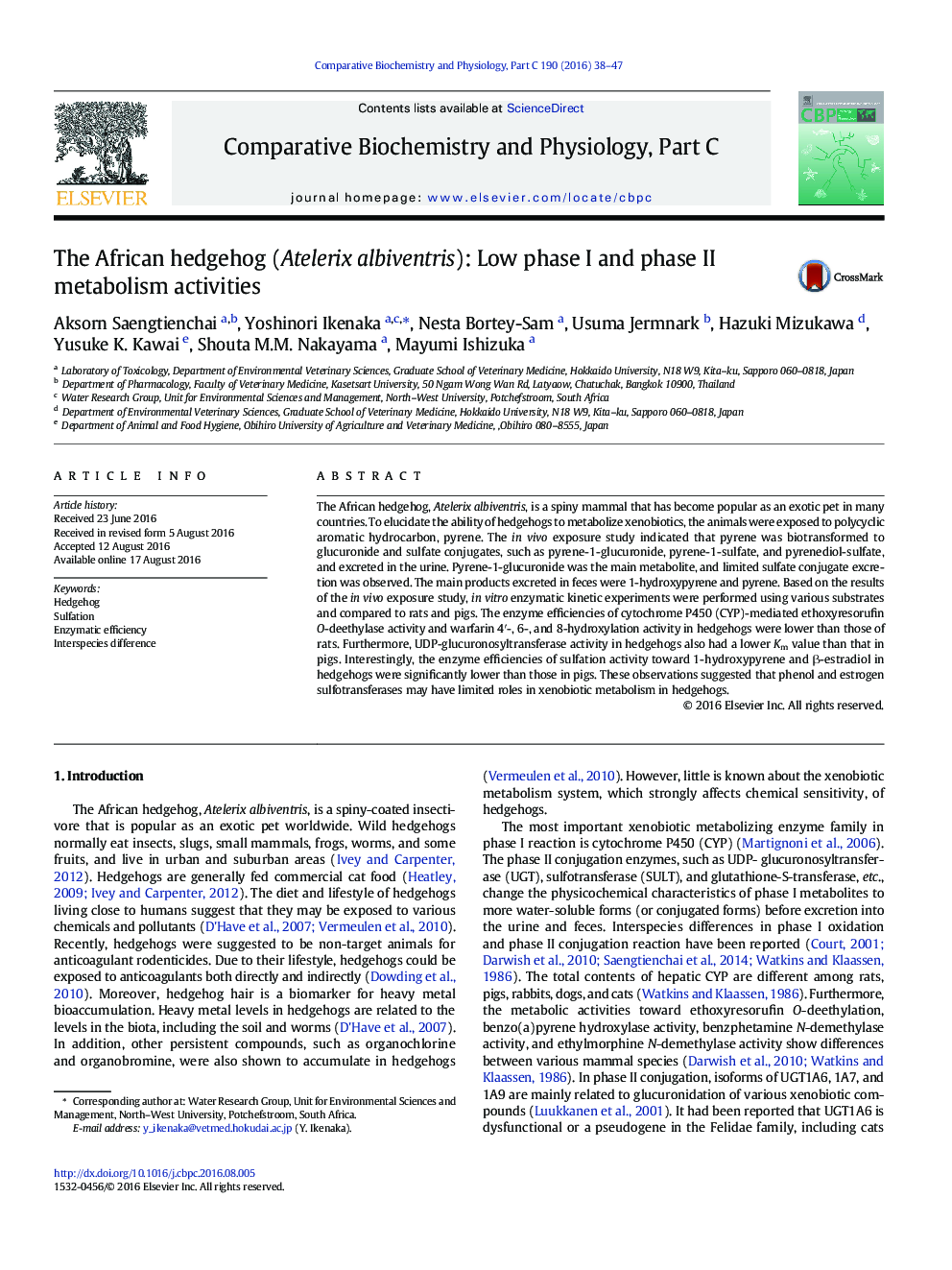| Article ID | Journal | Published Year | Pages | File Type |
|---|---|---|---|---|
| 1977087 | Comparative Biochemistry and Physiology Part C: Toxicology & Pharmacology | 2016 | 10 Pages |
The African hedgehog, Atelerix albiventris, is a spiny mammal that has become popular as an exotic pet in many countries. To elucidate the ability of hedgehogs to metabolize xenobiotics, the animals were exposed to polycyclic aromatic hydrocarbon, pyrene. The in vivo exposure study indicated that pyrene was biotransformed to glucuronide and sulfate conjugates, such as pyrene-1-glucuronide, pyrene-1-sulfate, and pyrenediol-sulfate, and excreted in the urine. Pyrene-1-glucuronide was the main metabolite, and limited sulfate conjugate excretion was observed. The main products excreted in feces were 1-hydroxypyrene and pyrene. Based on the results of the in vivo exposure study, in vitro enzymatic kinetic experiments were performed using various substrates and compared to rats and pigs. The enzyme efficiencies of cytochrome P450 (CYP)-mediated ethoxyresorufin O-deethylase activity and warfarin 4′-, 6-, and 8-hydroxylation activity in hedgehogs were lower than those of rats. Furthermore, UDP-glucuronosyltransferase activity in hedgehogs also had a lower Km value than that in pigs. Interestingly, the enzyme efficiencies of sulfation activity toward 1-hydroxypyrene and β-estradiol in hedgehogs were significantly lower than those in pigs. These observations suggested that phenol and estrogen sulfotransferases may have limited roles in xenobiotic metabolism in hedgehogs.
